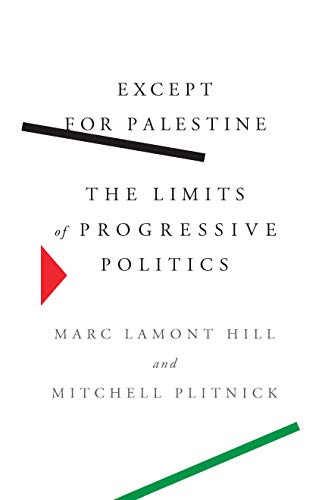The Deficit Myth: Modern Monetary Theory and the Birth of People’s Economy, Stephanie Kelton, Public Affairs, 2020, pp. 336, ISBN: 978-1541736184
Debts are now more pertinent than ever. The COVID-19 pandemic has led to massive government spending in an effort to sustain their economies and help citizens overcome the crisis. Canada’s budget deficit has soared by a staggering $260 billion so far, while the CARES Act in the United States alone increased the projected spending for this fiscal year by over $2.2 trillion. Around the world, increases in government spending follow years of ballooning debt. In previous years, and in response to rising debts, governments had implemented harsh austerity measures that have impacted public utilities and social welfare, and it is highly likely that these will return in full force once the pandemic is over and governments proclaim the need to balance their budgets once again.
Stephanie Kelton, professor at Stony Brook University and one-time aide to Senator Bernie Sanders, has long been at the forefront of debates surrounding national debt. In her book The Deficit Myth, she tackles the question of debt and claims to expose it as nothing more than a paper tiger.
By way of analyzing popular misconceptions surrounding debt, Kelton introduces the concept of Modern Monetary Theory that has recently taken the online world by storm. MMT traces its origins to the theory of chartalism of Georg Fridrich Knapp, the credit theory of money as propagated by Mitchell Ines, the functional economics of Abba Lerner, and the sectoral balances approach of British economist Wynne Godley.
Chartalism posits that it was taxes that allowed ancient and early nation-states to introduce their own currency. By rejecting the barter narrative, chartalism states that governing authorities created the tax liability to force people to look for work in order to repay their obligations to the rulers, who were then compelled to issue currency, creating a self-perpetuating loop that entrenched specific currencies in specific societies. In effect, the government, as a currency monopolist, supplied the taxpayers with the means to pay their dues, rather than the other way around.
Chartalism allows Kelton to tackle the first of six myths that have come to constitute “the deficit myth,” which likens government spending to an irresponsible household budget. As Kelton shows, politicians use this comparison in a pernicious, partisan way, to propagate vested interests. By comparing government spending to a household budget, politicians essentially make a moral argument that is far removed from reality. The US government, as any currency-issuing government, is the sole supplier of its US dollar. This lies at the heart of MMT. By issuing a non-convertible currency, and by refraining from borrowing in a currency that is not their own, governments achieve monetary sovereignty which grants them extensive policy space to address the socio-economic ills their societies face.
Kelton and other MMT economists reverse conventional thinking about the relationship between government spending and taxes. Instead of having to tax and borrow before they can spend, Kelton claims that governments spend and then tax and borrow in order to legitimize their authority, manage inflation, redistribute income and discourage certain behaviours. The government does not need taxes to spend because it differs from a household in its ability to issue currency. By contrast, a household is merely its user. The issuer can never run out of its own money.
But Kelton’s theory of money fails to take into account that money exists as a universal medium of exchange within and between local communities. Using Mosler’s experiment with his children and business cards, business cards do not exist because Mosler issued them but because they were used to purchase the concrete labour of his children. Money, therefore, represents value created and does not exist outside it. Moreover, what Mosler’s children were producing was use-value for consumption within the household. If they were to trade with other households, those other households would have to accept Mosler’s business cards as a universal equivalent of exchange of labour done in that particular household.
The question of government spending is closely tied to conventional ideas about inflation. Milton Friedman even said that inflation is always and everywhere a monetary phenomenon, produced by an increase in the quantity of money produced. This belief gave rise to the theory of the natural rate of unemployment, which represents the rate of unemployment below which inflation would begin to soar. In the US, the Fed estimates this rate of unemployment and acts to keep the economy hovering around this estimate, thereby trapping millions in perpetual unemployment. Paradoxically, as Kelton shows, for the Fed maximum employment is defined as a particular level of unemployment. Through their dual mandate of pursuing maximum employment and controlling inflation, the Fed has relied on influencing interest rates to control borrowing and spending in the economy.
The functional finance of Lerner believes that it is up to the government to manipulate taxes and spending to make up for the shortfall in private spending in order to achieve full employment. He believed that by adjusting its fiscal spending, the government is in a position to maintain prosperity and full employment. In essence, the budget outcome is irrelevant since debt for the private sector is not the same as debt for the public sector. The MMT believes that for as long as there is unemployment, it means that the government is underspending and forcing the society to live below its means. With enough aggregate spending, this output gap could be closed. So, the MMT economists maintain, inflation occurs only when more money is spent than the economy is capable of absorbing. They view the federal job guarantee program as an automatic stabilizer, allowing for the budget deficit to move up and down and reflect the needs of the economy. The limits of the economy, as represented by a given stock of labour and capital, are the limits beyond which government spending would lead to inflation.
While Kelton outlines what the real limits of the economy are, she fails to analyze their ability to expand. Shaikh, in his monumental Capitalism, differentiates between “engineering capacity,” which is the maximum sustained production possible and “economic capacity,” which represents the desired level of output from a particular standpoint of a given firm. Economic capacity may require spare capacity to ensure profits are made, and therefore will cap production at that level. As Shaikh states, there is no reason to assume that production at economic capacity would ensure full employment. MMT misses the fundamental point that under capitalism production is for profit, not social need, and that there will be unused capacity for as long as profits need to be ensured.
Another myth that Kelton addresses is the myth of the national debt, which maintains that reckless spending at present will come to haunt future generations and affect their prosperity. Given that the US government is a currency issuer, the choice to issue bonds to make up for the difference between spending and taxing is a political decision that can always be rescinded. The government can just digitally print money it needs, without borrowing from the private sector. Using the sectoral balances approach, as developed by Godley, Kelton shows how a deficit on the government’s balance sheet translates into a surplus in the private sector and states that budget deficits make the society wealthier.
Again, abstracting away from the existing mode of production in the economy allows Kelton to settle for false conclusions. She equates surpluses in the private sector with the wealth of societies. In a society that rests on private property and class antagonisms, surplus translates into accumulated capital extracted from workers. Throwing money at the problem tends not to solve it, but to enrich a particular class in a particular nation.
Kelton seeks to create a “people’s economy,” one that is geared towards people over profits and balanced budgets. Her singlehanded focus on the US, or currency-issuing countries, obscures their role in maintaining global inequalities. It is, after all, for a reason that they are in a position to issue their own currency with global power and reach. While the US may focus on the things that matter, other countries who are forced to borrow have no use of MMT. For them, international capital only acts to constrain their fiscal policy space. Rather than a tool of empowerment, it acts as a bludgeon to bring everyone in line.
Kelton introduces the concept of MMT in a highly readable, clever and persuasive way. While the ideas presented may sound explosive and myth-busting, they are nothing more than Keynesianism in plain words. By failing to tackle the underlying problems of the capitalist economy, MMT offers no new solutions to problems that continue, and will continue, to plague our societies.




